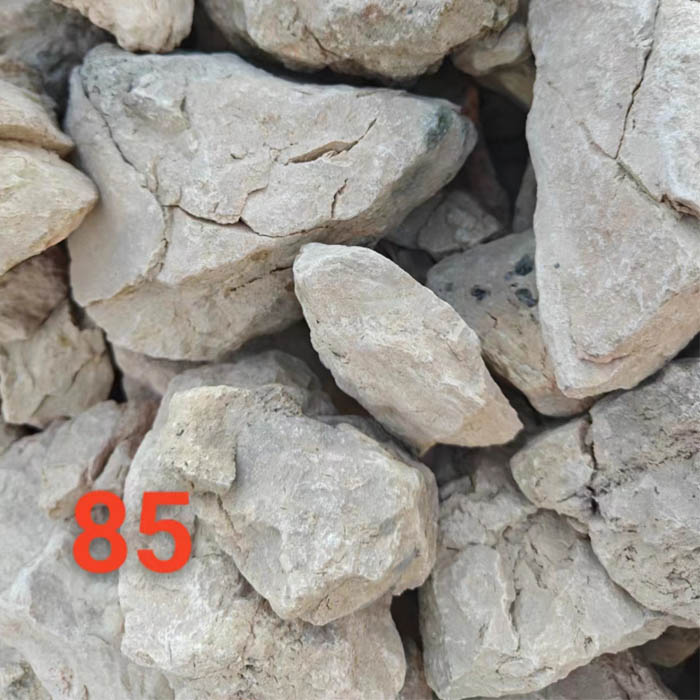Oct . 10, 2024 15:03 Back to list
castable refractory material factory
The Evolution and Importance of Castable Refractory Materials in Modern Industries
Castable refractory materials have emerged as a cornerstone in various industrial applications, particularly within sectors requiring high-temperature installations, such as metal production, ceramics, and petrochemicals. These advanced materials, designed to withstand extreme heat and thermal shock, play an essential role in ensuring the efficiency and longevity of industrial operations.
What are Castable Refractories?
Castable refractories are a type of heat-resistant material typically composed of ceramic aggregates, bonding agents, and various additives. These components are mixed with water to form a malleable paste that can be shaped or molded into complex forms before being cured in high-temperature environments. Unlike traditional brick refractories, which require precise alignment and stacking, castables provide greater flexibility in design and application. This versatility allows them to be tailored for specific use-cases, accommodating diverse shapes and thicknesses without sacrificing performance.
Manufacturing Process
The production of castable refractories begins with carefully selecting high-quality raw materials to ensure optimal performance. Common ingredients include alumina, silica, magnesia, and other specialized minerals that contribute to the material's heat resistance. Once the blend is established, it undergoes rigorous mixing and is processed into a consistent, workable paste.
After mixing, the material can be cast into molds for specific shapes, poured into place in situ, or extruded into predefined forms. The curing process involves drying and then firing the castable at high temperatures, which solidifies the structure and enhances its thermal properties. The result is a durable, rigid material that maintains its integrity under extreme thermal stress.
Advantages of Castable Refractories
1. High Thermal Resistance One of the primary advantages of castable refractories is their ability to withstand very high temperatures, often exceeding 3000°F (1648°C). This makes them ideal for applications such as steel furnaces, foundries, and incinerators.
castable refractory material factory

2. Flexibility in Design Unlike traditional bricks that require straight lines and exact fitments, castable refractories can conform to any shape, allowing manufacturers to create complex geometries that enhance the efficiency of industrial processes.
3. Ease of Installation The ability to pour and mold these materials significantly reduces the labor and time required for installation. This is especially beneficial in repair scenarios where downtime must be minimized.
4. Resistance to Chemical Attack Many castable refractories are designed to withstand corrosive environments, making them well-suited for industries such as petrochemical processing where acids and alkalis may be present.
5. Longevity and Durability Castable refractories generally offer a longer service life compared to traditional refractories, which contributes to lower maintenance costs and improved operational efficiency.
Applications in Industry
Castable refractories are widely used in multiple industries. In the metallurgical industry, they are essential for the linings of furnaces and kilns, where they endure the harsh environments of molten metals and slags. In the cement industry, these materials line pre-heaters, coolers, and kilns, facing wear from both thermal and mechanical stress.
Furthermore, in the petrochemical sector, castable refractories play a critical role within reactors and insulation systems, ensuring process efficiency and safety by resisting thermal degradation. In the power generation industry, they are employed in boilers and incinerators, contributing to improved thermal efficiency and reduced downtime.
Conclusion
As industries continue to evolve towards greater efficiency and sustainability, the demand for high-performance materials like castable refractories is only expected to grow. The ability to withstand extreme temperatures, combined with design flexibility and ease of installation, makes them indispensable in the modern industrial landscape. As we look to the future, innovations in material technology will likely lead to even more advanced formulations, further enhancing the capabilities and applications of castable refractories. In this way, these materials will not only continue to serve the current industrial needs but will also pave the way for future advancements in various fields.
-
Eco-Friendly Granule Covering Agent | Dust & Caking Control
NewsAug.06,2025
-
Fe-C Composite Pellets for BOF: High-Efficiency & Cost-Saving
NewsAug.05,2025
-
Premium Tundish Covering Agents Exporters | High Purity
NewsAug.04,2025
-
Fe-C Composite Pellets for BOF | Efficient & Economical
NewsAug.03,2025
-
Top Tundish Covering Agent Exporters | Premium Quality Solutions
NewsAug.02,2025
-
First Bauxite Exporters | AI-Optimized Supply
NewsAug.01,2025
